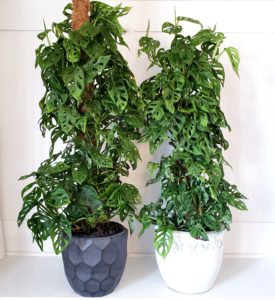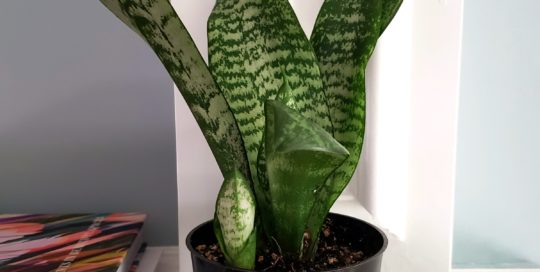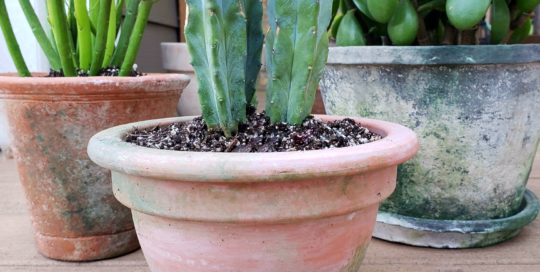Train Your Vining Plant To Climb
Views: 4492

I just made an exciting plant purchase – two 5 foot-tall monstera adansonii totems! These tropical beauties are so strong and healthy that they cling to their poles like monkeys on trees. I have a rough history with climbing plants. I once tried to stake my pothos and ended up with a few scraggly vines clinging to a dried-out moss pole. After several months, it remained more pole than plant and left me perplexed about vertical growing. My new adansonii totems are so full you can barely see the poles. They actually look like small trees. If you like big, lush houseplants, train your vining plant to climb. Moss poles give vines Amazonian strength and create robust vertical growth.
The Natural Tendency To Climb
In their natural environments, airoids start on the jungle floor. They crawl along the soil line and sprawl out until they hit a tree or pillar, then climb upwards. Once they anchor themselves to a support system, they grow strong roots and full-sized and often fenestrated leaves. The change in horizontal to vertical habitat puts stress on the plant, stimulating it to grow extra strong aerial roots in addition to feeder roots.
Philodendrons, pothos, and other epiphytes kindly tolerate our bookshelves and hanging baskets, but would much rather latch on to a support structure. Have you noticed that despite perfect growing conditions, your hanging plant produces smaller and smaller leaves as it grows? This is common with philodendrons and certain pothos varieties even if they receive the correct light and water. When leaf size dwindles, it’s usually because your hanging plant is looking for something to climb. Train your vining plant to climb, and you’ll get much bigger leaves.
Selecting Your Support System
The term “moss pole” is often used as a general term for a variety of different support systems. An actual moss pole is made of sphagnum moss wrapped around a wooden pole and encased in netting or string. The advantage of sphagnum moss is that it holds moisture and creates space for roots to anchor. The disadvantage is that you need to mist it regularly to keep it moist, and this can require a lot of time. Sphagnum moss poles are also susceptible to mold and pests.
Coco coir stakes offer an easy alternative. They are made of coconut fiber wrapped around water resistant PVC pipes and have a similar thread-like texture. Roots love fibrous textures, but they’ll also anchor to flat wood and trellises. Untreated cedar planks provide flat support systems and work well. You can also tie your plant to a trellis or bamboo sticks, but you won’t get the same root development. You can even find fun options at thrift stores and flea markets like wooden ladders, vintage trellises, and old frames to support your plant with rustic style.

Coco Coir Pole
Train Them Early
It is best to stake your plant while it is small, because repotting a full-sized climbing plant can be tricky. Remember, the best seasons to transfer or repot your plant are spring and summer. I am training a few of my plants to climb this spring and will share my results with you.
Meet Paula Palma
Paula has a teaching background in pilates, yoga, and meditation. She is currently studying biology as a prerequisite for further education. One of her favorite…
Paula's Recent Posts

What To Do When You Inherit A Houseplant






